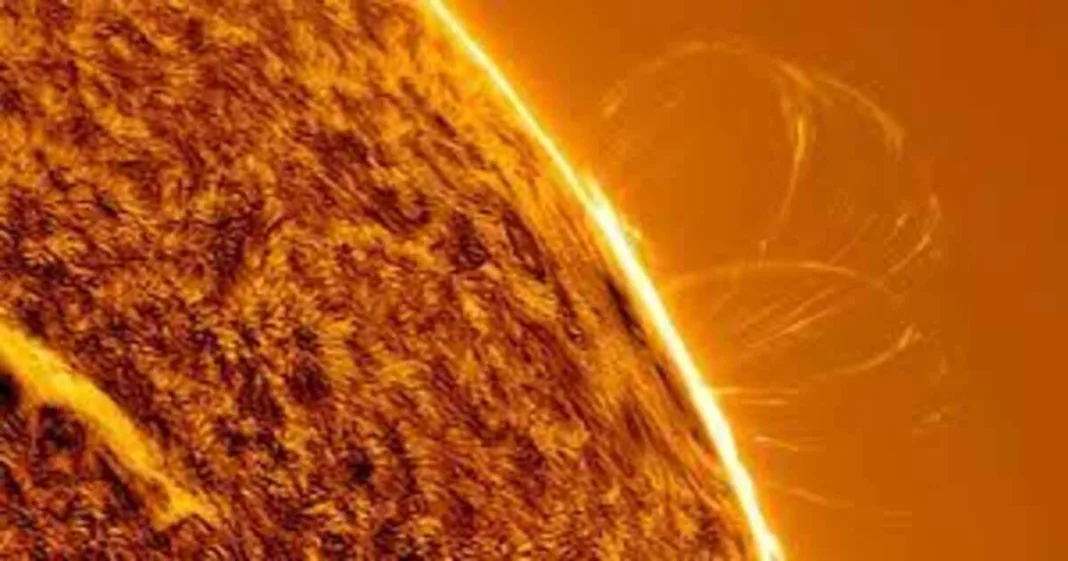Argentine astronomer Eduardo Schaberger Poupeau has recently documented a captivating celestial phenomenon known as “post-flare loops.” These radiant arches, appearing in the aftermath of a powerful solar flare, have provided scientists with a mesmerizing glimpse into the complexities of our sun’s behavior.
Dance of Post-Flare Loops
Poupeau’s groundbreaking observations showcase post-flare loops reaching staggering heights of up to 100,000 kilometers above the sun’s surface. These ethereal structures, believed to be magnetic in nature and filled with super-heated plasma, offer a visual feast that lasts for minutes to hours after a solar explosion. The question on every scientist’s mind remains: what precisely triggers and sustains these majestic loops?
Read More: After the moon, India launches rocket to study the sun
Debates in the Scientific Community
While the existence of post-flare loops is well-documented, the scientific community is still engaged in a spirited debate about their precise nature. Some theories posit that these loops involve the condensation of gas from the sun’s corona, suggesting a multifaceted interaction where a solar flare not only expels material but also draws it back in. Poupeau’s meticulous documentation provides valuable visual data that will aid in resolving these debates and further our understanding of these enigmatic solar phenomena.
Solar Flare-Earth Connection
The urgency to comprehend post-flare loops stems from their potential impact on Earth. Solar flares, powerful bursts of energy from the sun, have the capacity to disrupt communication systems, satellite operations, and power grids. In our increasingly technology-dependent society, understanding the dynamics of these solar events is paramount for mitigating risks and developing strategies to safeguard our infrastructure.
Anticipating the Solar Maximum
As we approach the Solar Maximum later this year, marking the peak of the sun’s 11-year cycle of activity, scientists anticipate a surge in both frequency and intensity of solar flares. This heightened phase offers a unique opportunity for observation and study, promising a deeper insight into the dynamics of solar flares and their implications for space weather.
Read More: NASA regains communication with Mars Helicopter
Eduardo Schaberger Poupeau’s recent observations significantly contribute to the growing body of knowledge surrounding solar activities. By shedding light on the intricate post-explosion loops, Poupeau’s work unveils a new chapter in our understanding of the sun’s behavior, providing astronomers and scientists with valuable data to decipher the mysteries of these celestial occurrences.














